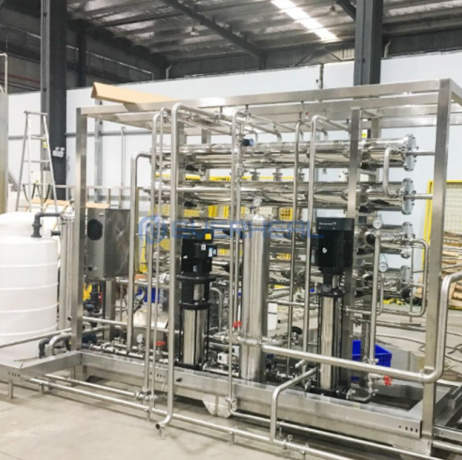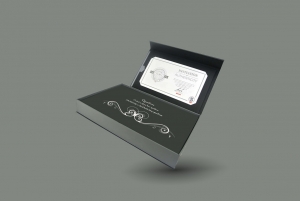please click here:
https://www.everhealgroup.com/pharmaceutical-water-trearment-equipment.html
Water is an indispensable raw material in pharmaceutical manufacturing, requiring the highest purity to ensure patient safety and product efficacy. Pharmaceutical water treatment equipment plays a critical role in producing purified water (PW) and water for injection (WFI) that meet stringent regulatory standards. This comprehensive article explores the types, technologies, standards, and applications of pharmaceutical water treatment equipment, supported by images and videos illustrating key processes.
Introduction to Pharmaceutical Water Treatment
Pharmaceutical water treatment equipment is designed to produce water that complies with the rigorous purity standards required in drug manufacturing. Water is used as an ingredient, solvent, cleaning agent, and analytical reagent in pharmaceutical processes. The equipment removes contaminants such as organic compounds, microorganisms, dissolved solids, and endotoxins to ensure the water is safe and meets pharmacopoeial specifications.
The treatment process typically involves multiple stages, including pre-treatment, purification, disinfection, and storage, all controlled and monitored to maintain water quality. Advanced control systems, such as Siemens S7 PLCs, ensure reliable operation and integration into pharmaceutical production lines.
Types of Pharmaceutical Water
Pharmaceutical water is classified into different grades based on purity and intended use:
Purified Water (PW)
-
Used in oral dosage forms, cleaning, and less critical applications.
-
Must meet standards such as USP, EP, or JP with limits on microbial counts, conductivity, and total organic carbon (TOC).
-
Typically produced by reverse osmosis combined with other purification steps.Water for Injection (WFI)
-
Highest purity water used for parenteral medications, injectables, and critical cleaning processes.
-
Must be sterile and pyrogen-free, often produced by distillation or ultrafiltration downstream of RO.
-
Requires strict microbiological control and validated sanitization procedures.Pure Steam
-
Used for sterilization of equipment and direct contact with active pharmaceutical ingredients (APIs).
-
Matches WFI quality after condensation.
Regulatory Standards and Quality Requirements
Pharmaceutical water must comply with pharmacopoeial standards such as:
-
United States Pharmacopeia (USP)
-
European Pharmacopoeia (EP)
-
Japanese Pharmacopoeia (JP)
These standards specify limits for:
-
Microbial contamination (e.g., total bacterial count ≤ 100 cfu/ml for PW)
-
Conductivity (e.g., ≤ 1.3 µS/cm at 25°C)
-
Total Organic Carbon (TOC) (e.g., ≤ 0.5 mg/L)
-
pH range (usually 5.0 to 7.0)
-
Endotoxin levels (especially critical for WFI)
Compliance is mandatory to ensure patient safety and product quality. Water treatment systems must be validated and documented according to Good Manufacturing Practice (GMP) and FDA regulations.
Key Pharmaceutical Water Treatment Technologies
Pre-Treatment
Pre-treatment removes suspended solids, chlorine, and hardness from feed water to protect downstream equipment.
-
Multimedia filtration removes particulates.
-
Dechlorination (e.g., sodium metabisulfite dosing) eliminates chlorine that can damage stainless steel and RO membranes.
-
Softening reduces calcium and magnesium salts to prevent scaling.
Reverse Osmosis (RO)
RO membranes remove dissolved solids, bacteria, viruses, and pyrogens by forcing water through semipermeable membranes.
-
Single or double-pass RO systems are common.
-
Frequency-controlled pumps optimize energy use.
-
RO is cost-effective for producing PW.
Electrodeionization (EDI)
EDI combines ion exchange resins and electricity to continuously remove ionized species without chemical regeneration.
-
Often used downstream of RO for polishing.
-
Produces high-purity water with low conductivity.
-
Environmentally friendly and reduces chemical use.
Distillation
Distillation, including multiple-effect and vapor compression distillation, is used primarily for WFI production.
-
Involves evaporation and condensation to remove impurities.
-
Energy-intensive but produces very high purity water.
-
Often combined with ultrafiltration for microbial control.
Ultraviolet (UV) Sterilization
UV light disinfects water by destroying microorganisms' DNA.
-
Used as a final disinfection step.
-
Helps maintain microbiological purity in storage and distribution systems.
System Design and Operation
Pharmaceutical water systems are custom-designed to meet production capacity and quality requirements. Key design considerations include:
-
Use of stainless steel (316L) piping and tanks with sanitary welds.
-
Loop systems to maintain water circulation and prevent stagnation.
-
Automated control and monitoring for parameters like conductivity, TOC, and microbial counts.
-
Sanitization methods such as hot water, steam, or chemical treatment to control biofilm.
Maintenance and Validation
Regular maintenance and validation are critical to ensure system performance and compliance:
-
Annual review and update of system drawings and layouts are required.
-
Microbial testing includes total microbial count, objectionable organisms, and endotoxin levels.
-
Validation protocols cover installation qualification (IQ), operational qualification (OQ), and performance qualification (PQ).
-
Documentation and traceability are essential for regulatory inspections.
Environmental and Cost Considerations
Modern pharmaceutical water treatment equipment incorporates innovations to reduce environmental impact and operating costs:
-
Frequency-controlled pumps reduce energy consumption by up to 90%.
-
Integrated concentrate stages in RO systems improve water recovery and reduce waste.
-
Sustainable designs minimize water and energy usage while maintaining quality.
Frequently Asked Questions
1. What is pharmaceutical water treatment?
It is the process of purifying water to remove contaminants and ensure it meets strict quality standards for pharmaceutical use.
2. Why is pharmaceutical water treatment important?
To guarantee the safety, efficacy, and microbiological purity of medicines and to prevent contamination during production.
3. What are the main methods used in pharmaceutical water treatment?
Pre-treatment, reverse osmosis, electrodeionization, distillation, and UV sterilization.
4. How is water for injection different from purified water?
WFI has higher purity and sterility requirements and is used for parenteral drugs, while PW is used for less critical applications.
5. How often should pharmaceutical water systems be validated?
Validation should be performed initially and revalidated annually or after any significant system changes.
Summary
Pharmaceutical water treatment equipment is vital for producing high-quality water that complies with stringent regulatory standards. Through a combination of advanced technologies such as reverse osmosis, electrodeionization, distillation, and UV sterilization, these systems ensure the removal of contaminants to protect patient safety and maintain drug efficacy. Proper system design, operation, maintenance, and validation are essential to meet the evolving challenges of pharmaceutical manufacturing. Innovations in equipment design also contribute to sustainability and cost-efficiency in pharmaceutical water treatment.
Article Summary
Pharmaceutical water treatment equipment ensures the production of ultrapure water essential for drug manufacturing. This article covers types of pharmaceutical water, regulatory standards, key treatment technologies like reverse osmosis and distillation, system design, and maintenance. It highlights the importance of compliance, patient safety, and sustainability in pharmaceutical water systems, providing a comprehensive guide for industry professionals.






